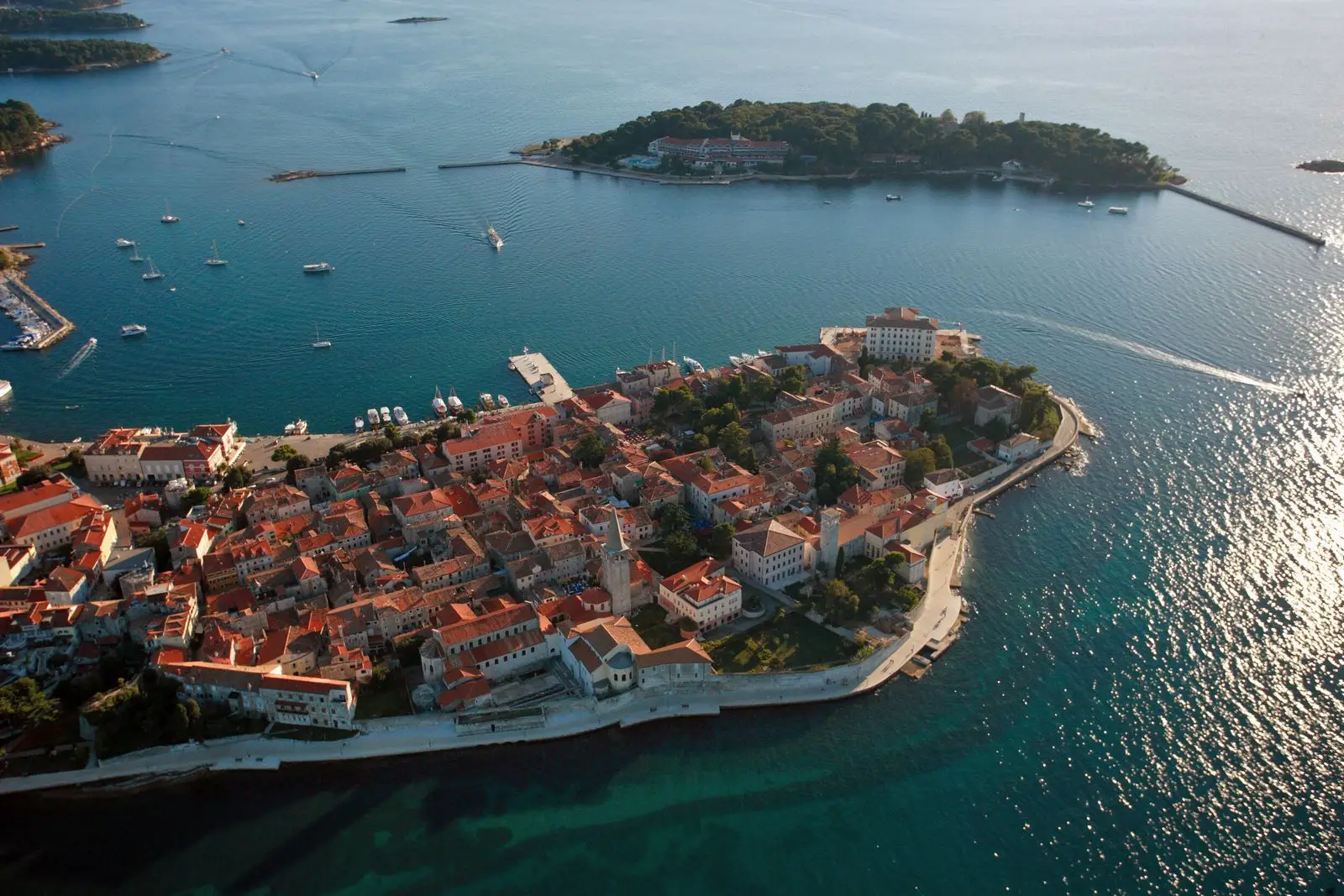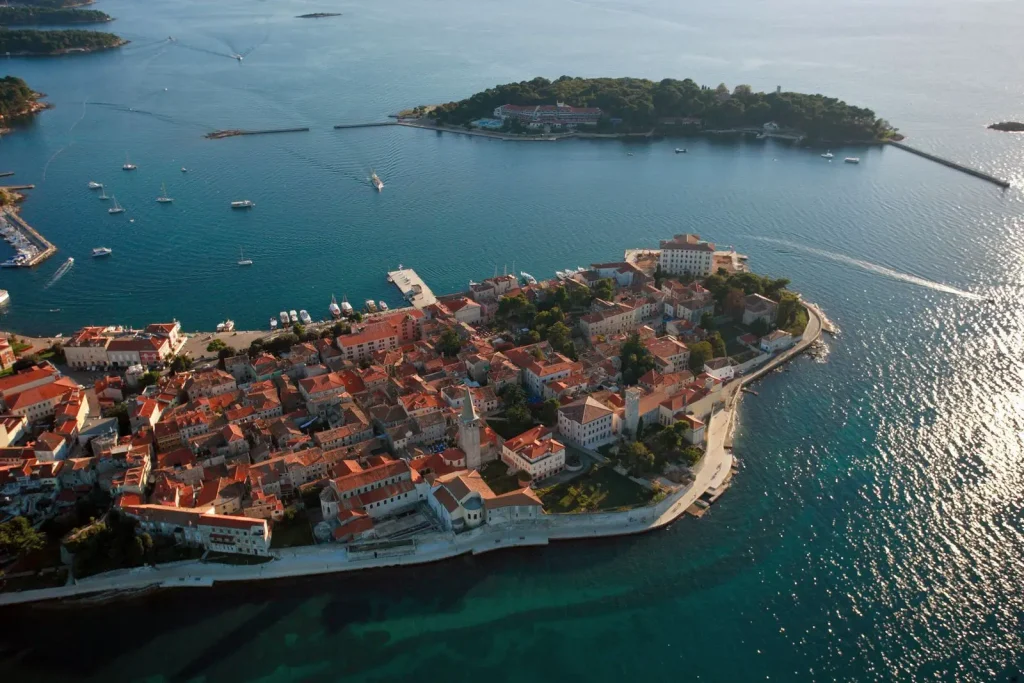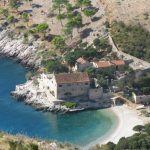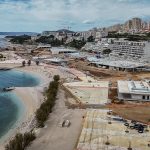
Which Croatian destinations have the most tourists to boast of in the coronavirus era? There are several, and there are reasons and lessons to be learned from them for many others…
As Morski writes on the 20th of July, 2020, across Croatia, one million overnight stays were realised in the first half of July, and the Croatian destinations with the highest number of overnight stays were Rovinj, Medulin, Vir, Mali Losinj and Porec.
However, although the aformentioned areas achieved the best results, they will still face significantly lower revenues than they enjoyed last year, not only due to the lack of guests compared to last year but also due to the fact that many accommodation facilities have lowered their prices, some others working in hospitality and catering have also lowered theirs, while the flat rate of sojourn tax has been lowered for private renters by as much as 50 percent.
Although the gorgeous island of Vir is one of the top destinations in terms of attendance, it should be taken into account that most Croatian guests going there also own property there, so only 22 percent of guests actually paid for accommodation on Vir during the first half of July.
”When observing the type of accommodation (commercial or non-commercial accommodation), in Vir, 22 percent of overnight stays in the first half of July were realised in commercial accommodation facilities (hotels, camps and private accommodation), while in Rovinj, 96 percent of overnight stays, in Medulin 89 percent, in Mali Losinj 76 percent and in Porec 89 percent of overnight stays were realised in commercial accommodation facilities,” the Croatian National Tourist Board (HTZ) stated in response to a question on the topic from Index.
The Istrian city of Rovinj has been enjoying first place for years
The directors of the tourist boards of these five most visited Croatian destinations described the things they can attribute such good results to, given the circumstances, and some of them provided some rough estimates for the rest of the season and guessed how much, approximately, they will face in terms of revenue decline this year.
The long-standing number one on the list of the most visited cities in Croatia (along with Dubrovnik) is Rovinj.
The director of the Rovinj Tourist Board, Odette Sapac, told Index that they were most helped by the fact that Rovinj is a destination that many can sit in their cars and drive to from some of Croatia’s closest to emitting markets, while Dalmatia is far more dependent on airlines. Over 50 percent of Rovinj’s guests are from Germany and Austria, followed by guests from Slovenia, Italy and the Netherlands.
”In the last part of July, we realised 612,040 overnight stays, which is about 60 percent of the turnover from last year for the same period. Since the prices are different from last year and have been adjusted to this situation, our revenues will certainly be lower. Accommodation prices at the beginning of the season were at the level of last year’s prices during the pre-season,” said Odette Sapac.
Apart from the fact that, she says, Rovinj is a close destination for both Italians and Slovenes, the reason for their success is that they are also very attractive to foreign guests along with Dubrovnik. According to Sapac, they also sent out a good promotional message to the guests that, regardless of the coronavirus pandemic, they are well prepared and are firmly adhering to the anti-epidemic measures. For a while, as she recalled, Rovinj was entirely without coronavirus patients.
”There were a couple of good promotional actions that we carried out with the County Tourist Board towards Germany and Austria, and with that action, we included some other countries.
According to them, the camps are also a great advantage because guests feel safer as they can more easily achieve social distance and at the same time stay outdoors, where the new coronavirus finds it more difficult to spread.
”We now have about 19,000 guests a day, which is a large number for many in Croatia even during normal circumstances, and that’s at the level of 60 percent when compared to last year during the same period. This time last year, we had 37,000 guests a day. It’s being speculated that at the end of the year, the total result would be around 30 percent at the level of last year, or 40 percent if August and September are good for us. That would be a very good result. We must be humble and content. We’re trying not to hold mass events to prevent infection,” Sapac told Index.
Istria generally did very well throughout the ongoing coronavirus epidemic, when the number of tourists dropped drastically, yet it still managed to attract the most guests. Thus, in addition to Rovinj, two other Istrian towns took places on the list of the five most visited Croatian destinations. The proximity of emitting markets, the fact that they are easily driven to and don’t depend heavily on air traffic, which is still significantly reduced, are all reasons for Istria’s general level of success.
In Medulin so far, 251,244 overnight stays have been realised, which is 60 percent compared to last year, according to the director of the Medulin Tourist Board, Enco Crnobori.
Medulin had 10 million kuna in revenue last year, now they expect 3.5 million…
We have about 15,000 guests a day and we’re second in Istria, only Rovinj is ahead of us. We’re still Croatian destinations without a single coronavirus case, we’ve worked a lot on educating the locals regarding the implementation of measures in order to maintain a positive epidemiological picture,” said Crnobori.
Just like in Rovinj, the advantage is that there are a lot of camps, as many as 7 large and 22 smaller family camps in Banjole, and they also have a lot of holiday homes, where guests, just like in the camps, feel safer.
The cccupancy of camps and holiday homes stands at about 50 percent, so we’re left with only hotel accommodation. Only one hotel has been opened, and now another one should open, while two remain. closed. We also have three marinas and the situation with charters is good, so they’re also at 50 percent occupancy. This year, if we have a million overnight stays, that would be good, last year we had 2.8 million. But the situation is changing day by day. It’s very important that previous guests return to us, we’re branded as a destination for family and sports tourism, and we’re still working on branding the promotion of cultural tourism,” said Crnobori.
As for income, Crnobori believes it will drop dramatically…
”Last year, we had over 10 million kuna, and now the plan is 3.5 million kuna in revenue, so… 35 percent of 2019’s figure,” the director of the Medulin Tourist Board noted.
Almost the same number of overnight stays, around 193,000, were realised in both Porec and Mali Losinj in the first part of July, with Mali Losinj standing slightly better because they achieved 64 percent of turnover when compared to the same period last year, while Porec achieved 47 percent.
The director of the Mali Losinj Tourist Board, Dalibor Cvitkovic, told Index that private accommodation and camps have the best occupancy rates, which isn’t surprising due to the situation with the coronavirus, while their main markets are Slovenia, Germany and Austria, from which old guests regularly return.
”In order to attract guests, we went with the ”ferry free action”, so everyone who stays with us for seven days, the price of their accommodation is reduced by however much it cost them to use the ferry. This ranges from 50 to 120 euros, depending on whether they’re in a car or a motorhome. Considering that 40 percent of our guests are in the camps, for which the ferry is 120 euros, that means that with this action they get practically two nights free, so we have equated ourselves with mainland destinations,” said Cvitkovic.
In addition, he stated that they are the only ones in Croatia who have the so-called an insurance policy for guests suspected of having contracted the new coronavirus.
”For guests who have to go into self-isolation, while they’re still in Croatia, the Tourist Board covers the cost of food and accommodation and ensures the delivery of medicines and supplies. At the same time, we find alternative accommodation for the landlord with whom that guest is staying, and we reimburse that landlord for the cost incurred. In addition, after the guest who is coronavirus positive leaves the apartment, we take over the cost of cleaning the apartment. So, we told the landlords that they’re not alone in this, and the guests know that they’re safe and know that if something happens, and it won’t be at their expense. We don’t look at guests as potential patients, but instead we invest in the future, so these guests will return in other years as well,” Cvitkovic explained.
Although they are far better filled than most Croatian destinations, in Mali Losinj, they’re also aware of the drop in income…
”The overnight stay index isn’t the same as the income index and the income index will be 10 to 15 percent lower. Hotels generate the highest sojourn tax for us, private individuals participate with a 50 percent smaller lump sum than before. Certain actions are undertaken in private accommodation. As for hospitality facilities, some are getting better traffic. Regular guests already have a certain habit of going to certain restaurants, and those restaurants on the waterfront that depended on the masses aren’t doing as well. For us, the consumption is on average around 100 euros per day per guest, and 160 for a hotel guest. Now that we don’t have those hotel guests, the drop in spending is higher. There will definitely be a drop in traffic,” said Cvitkovic.
The director of the Porec Tourist Board, Nenad Velenik, said that they had realised 193,000 overnight stays in July so far, which is 47 percent compared to last year, emphasising that this was a phenomenal result for them.
”In the first 10 days of July, we realised all of the overnights from June. We started on June the 1st with 523 people a day, to now when we have 14,000 guests a day. In terms of markets, most come to us from our traditional points such as Germany, Slovenia, Austria and Italy. There are slightly fewer Austrians than usual, but we can attribute those good results to the fact that the quality of the destination has been recognised, as well as the fact that we’re a destination to which one can drive,” Velenik stated.
He added that the positive epidemiological situation also benefits everything, so the demand for Porec is higher than in the rest of Croatia.
”We’re traditionally a hotel destination and we have only one camp, unlike Rovinj, which has about 20,000 beds in their campsites, so they achieve better results. There will definitely be a drop in revenue. We don’t count on 50 percent of the lump sum income from private accommodation, so we’re removing a piece of the pie that was significant. I don’t know the policy of hotel companies and how much they’ve reduced their prices. I hear the bookings are going solidly, but they probably lowered their prices as well given the situation. Private accommodation prices have been reduced, you have overnight stays costing 10 euros per person, so the total income will certainly be much lower than it was last year,” said Velenik.
Vir has a large number of overnight stays, but will have a meagre profits…
Vir realised 276,000 overnight stays in the first half of July, which is more than some of the above, but it should be noted that, according to the CNTB, only 22 percent of overnight stays were in commercial accommodation, which means that most people were coming to their own property on the island.
The director of the Vir Tourist Board, Srdjan Liveric, says that foreign guests realised 120,000 overnight stays, while domestic guests realised 167,000.
”We’re extremely satisfied, we’re now at 75 percent when compared to the same period last year, which is very good for us. We hope for the further growth of this trend and it’s realistic that we’ll achieve 50 percent less turnover than we did last year, and revenues will be lower,” said Liveric.
He pointed out that they achieved such good results with foreign guests because they invested a lot of money in advertising and did not depend on flights like Dubrovnik does.
For more on Croatian destinations during the coronavirus era, follow our travel page.











